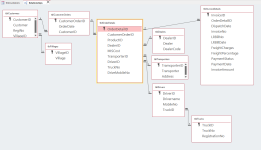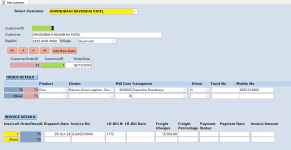bob fitz
AWF VIP
- Local time
- Today, 23:17
- Joined
- May 23, 2011
- Messages
- 4,809
JarryE said:That's not the case mate. Anyways helping is your decision solely.
I'm a little bit confused. If you think you have a good and functional design why would you not ask why the comment has been made?Yeah, they come in here wanting help using ACCESS as a spreadsheet and wonder why it doesn't work
The file you posted in post #7 is indeed, an Access file. However, IMHO it can not be argued that it has a good and functional design.
For example:
It has four tables without any relationships.
Three of the tables have a PK called ID. The other has no PK.
The names of Tables, Forms, Fields, and Controls have spaces. One table even uses a hyphen in numerous fields.
The use of field names like Invoice No-2, Invoice No-3, Invoice No-4, Invoice No-5 is typical of a poorly designed db.
Databases have a similarity to houses. If the design and foundations are poor, they soon become unfit for purpose.
Good luck with your project.


